Feed Pellet Size and Its Effect on Poultry Performance
In poultry farming, many people focus on feed formulas and ingredients but often overlook the length and diameter of feed pellets. Yet pellet size directly affects how chickens eat, their digestion and nutrient absorption, and ultimately their growth rate, uniformity, and overall farm performance.
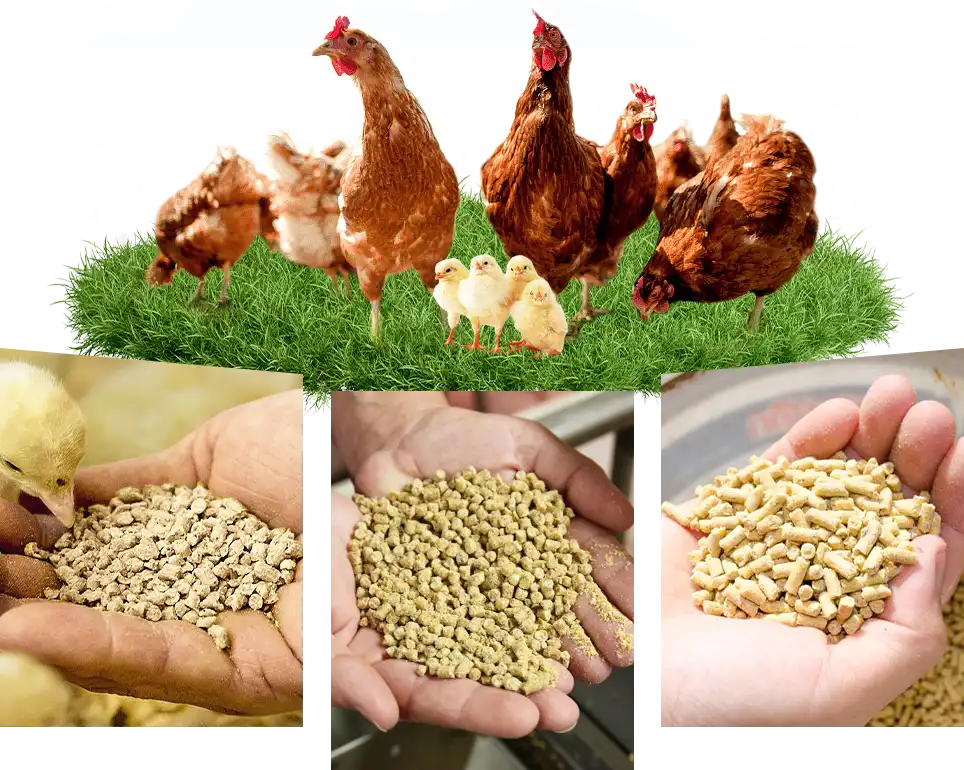
Effect on Production Performance
Feed pellet size is closely linked to poultry performance, but the focus differs between broilers and layers.
Broiler Performance
Starter Phase
There are two main views on particle size in broiler starter feed. Some studies report that fine particles support intake and digestion in chicks[7]. Others suggest that coarse particles given early stimulate gizzard development and improve digestion[2].
Research[6]shows that particle size has a strong effect on broiler performance in the first 0–10 days. In trials using particles from 1,202 to 2,172 μm, birds fed 1,760 μm or 2,172 μm achieved better feed conversion ratios (FCR, lower is better) than those given 1,202, 1,335, or 1,675 μm.
Overall, the results show that using slightly larger particles can help broilers grow faster and use feed more efficiently.
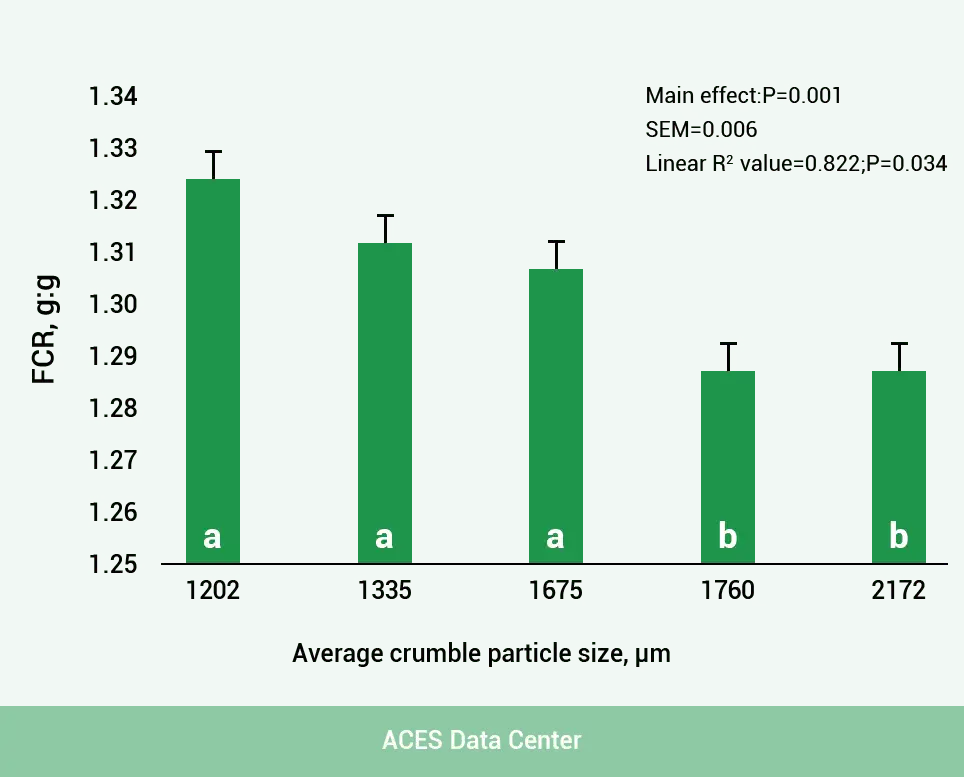
For chicks, start with good-quality crumbles to make feed easy to eat and nutrients evenly available. Then move them early to larger particles or some coarse feed to help the gizzard develop.
Grower and Finisher Stages
In broiler production, feed conversion ratio (FCR) and daily weight gain are key measures of efficiency. Pellet feed is widely used because it reduces waste, lowers feeding effort, and improves conversion.
Studies show that between 10-21 days of age, broilers fed 5 mm or 6 mm pellets gained more weight than those given 3 mm pellets. Pellet diameter had no clear effect at this stage. As birds grew older, the growth advantage of longer pellets gradually declined and eventually disappeared[4].
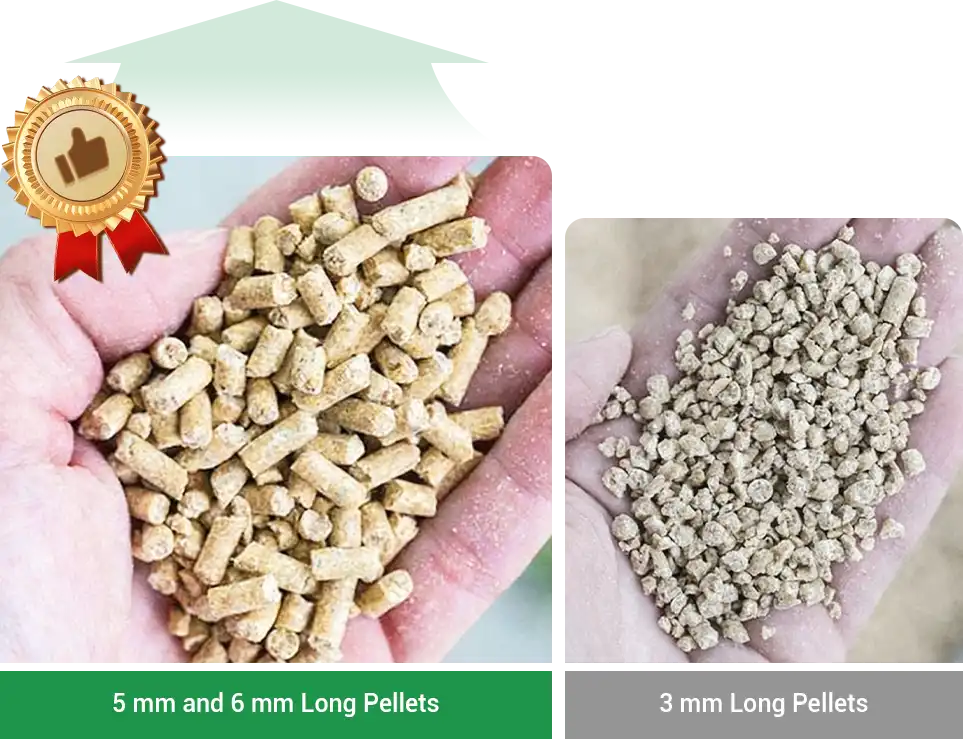
Effect of Feed Form
Compared with mash feed, pellets (or crumbles) can significantly increase feed intake, daily gain, and final body weight in broilers. This advantage comes from several factors: pellets encourage feed intake, provide higher bulk density, reduce waste, and improve nutrient digestion and use.
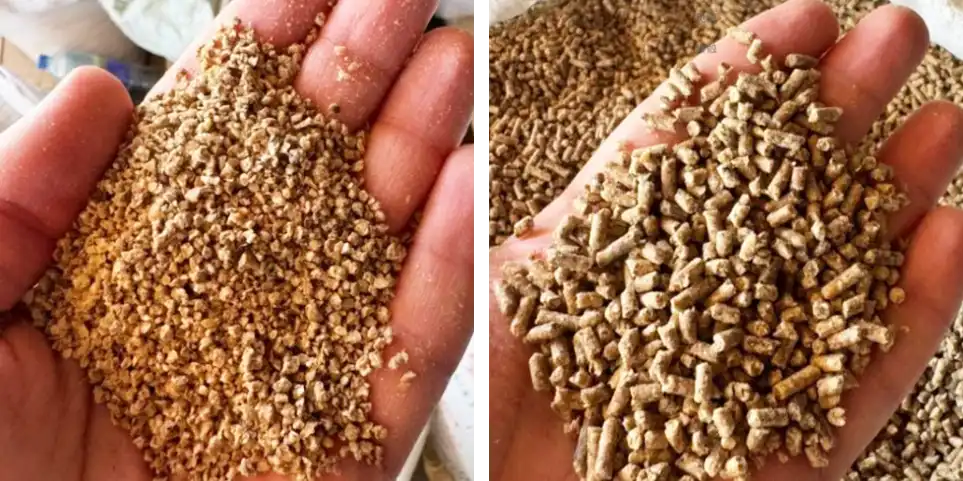
Layer Performance
Most studies show that changing particle size has little effect on egg production, egg weight, feed intake, or feed conversion ratio (FCR). One reason is that hens eating mash often select coarse particles, which leads to uneven nutrient intake and masks the real impact of particle size.
Some findings suggest that coarser particles, especially when combined with crumbles or pellets, can improve FCR and total egg mass compared with fine mash[5].
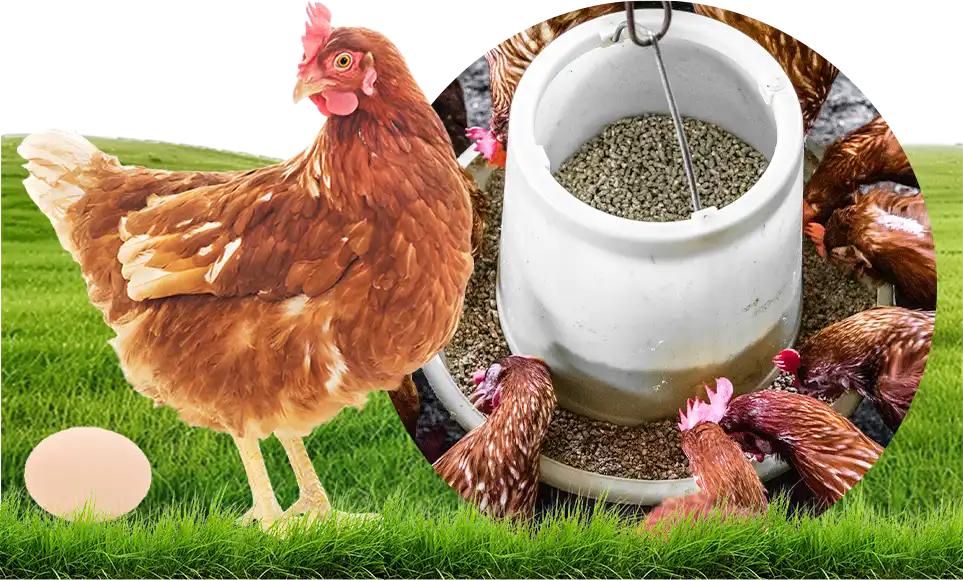
These results may seem inconsistent, but they reflect an interaction among grind size, final feed form such as mash or pellets, and pellet quality including hardness and fines. In mash diets, the benefits of coarse grinding, such as better gizzard development, are more evident. Once feed is pelleted, the heat and pressure of processing break particles down further and reduce the effect of initial grind size.
Feed intake is also closely tied to feed form. Very fine and dusty feed reduces palatability and lowers intake. In hot climates, slightly larger particles or crumbles can stimulate intake and help birds maintain energy levels.
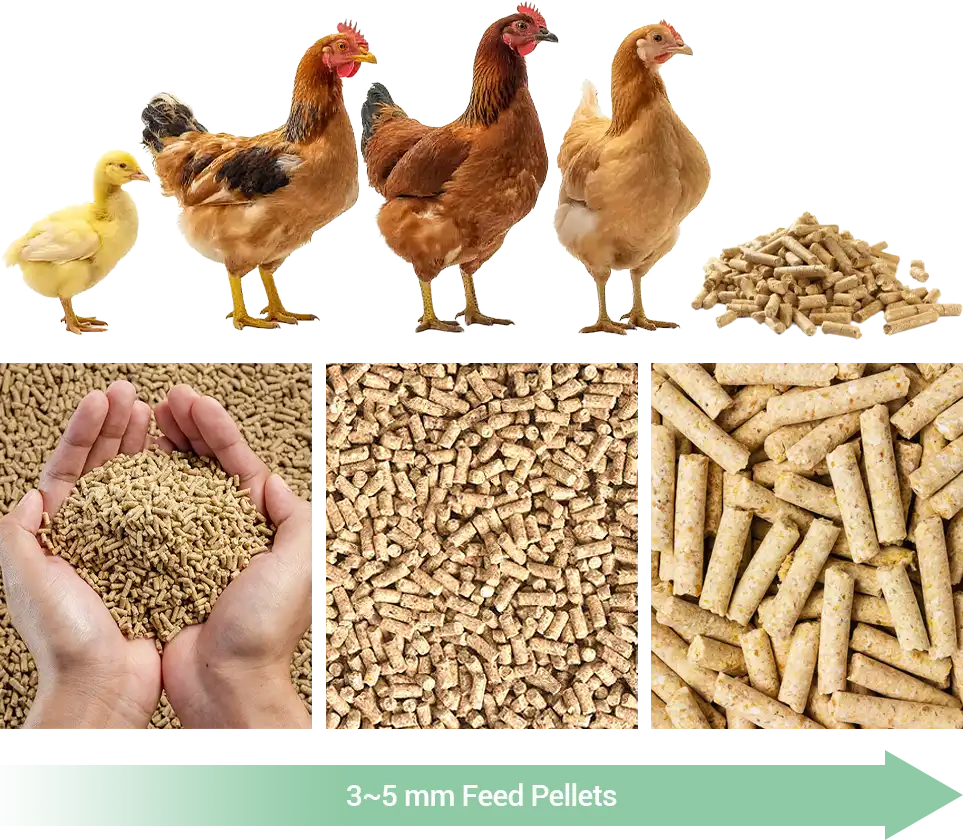
Calcium Particle Size
Most of the shell forms at night, and each egg needs about 2-2.5 grams of calcium. Since hens do not eat during this time, they draw on calcium stored in the gut and bones, which over time can lead to weak bones and cage layer fatigue.
Including coarse calcium, 2-4 mm in size such as limestone grit or oyster shell, is recommended. It stays longer in the gizzard and releases calcium slowly through the night, improving shell strength and helping maintain bone health.
Effects on Digestive Tract Development
Pellets with moderate diameter and length support better gizzard function, gut health, and feed use compared with very fine particles.
1. Gizzard Development
Studies[6]show that pellets 3-4 mm in diameter and about 1.5 to 2 times as long as their diameter improve grinding action. This increases gizzard weight and muscle thickness, which strengthens its function. A well-developed gizzard also improves gut motility, keeps feed in the tract longer, and boosts nutrient absorption.
2. pH Regulation
Pellets 3 to 5 mm in diameter stimulate acid secretion and lower gizzard pH[1]. A more acidic environment enhances enzyme activity and helps suppress pathogens such as Salmonella and Clostridium perfringens.
3. Gut Morphology and Microflora
When pellet length is kept at 1.5 to 2 times the diameter, overall digestion improves, fewer undigested particles reach the lower gut, and harmful bacteria are reduced [2]. This size also supports beneficial bacteria like Lactobacillus and promotes villi growth, increasing absorption surface and feed efficiency.
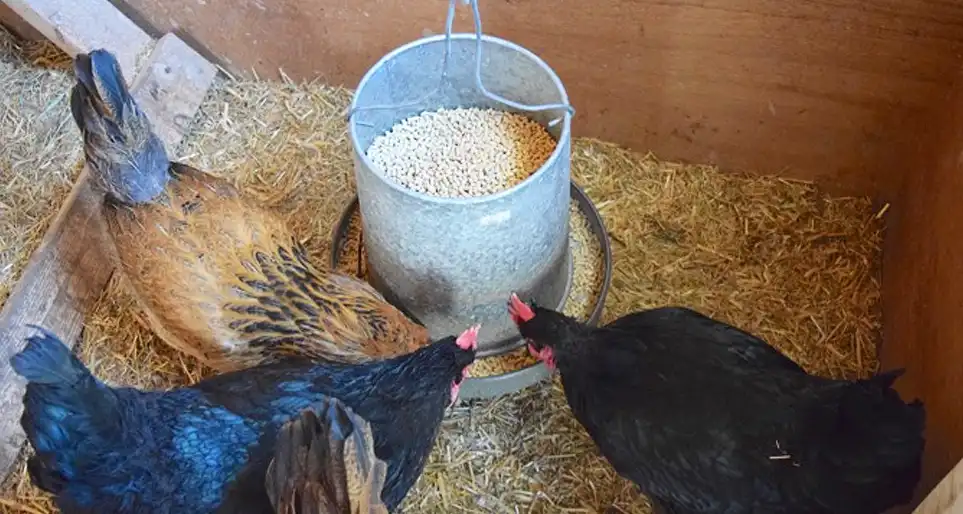
Why Very Fine Particles Are Not Recommended
Although fine particles have a larger surface area and seem easier for enzymes to break down, long-term use has negative effects. Very fine feed weakens gizzard function, lowers digestive efficiency, disrupts gut balance, and increases the risk of disease. Over time, this harms bird health and reduces overall production performance.
For both health management and economic efficiency, very fine food should not be used as the main diet over the long term.
| Poultry Type | Stage | Diameter | Length(Pellet) |
| Broilers | 0–10 days | 1.2–2.2 mm (crumbles) | < 3 mm |
| Broilers | 10–21 days | 3–4 mm | 5–6 mm |
| Broilers | 21+ days | 3–5 mm | 4.5–10 mm |
| Layers | All stages | 3–4 mm | 4.5–8 mm |
| Layer calcium | Laying period | 2–4 mm | - |
Pellet feed has proven to deliver better growth and efficiency in broiler production, while mash still has a role in cost control and gizzard development if particle size is managed properly. Today, pellets are the preferred choice in most commercial farms.
For more information on feed pellet machines, check out our article on 6 Types of Animals Feed Pellet Machine for Sale.
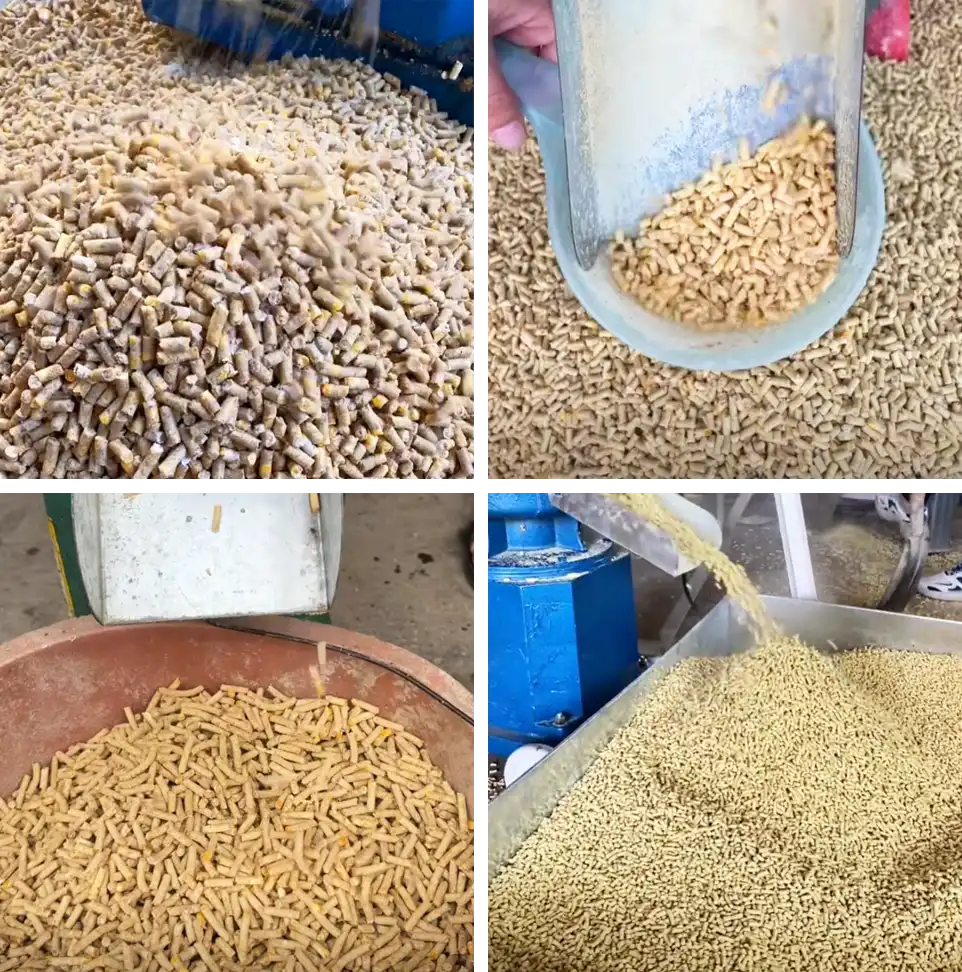
References
- Hetland, H., Svihus, B., & Krogdahl, Å. (2003).British Poultry Science, 44(2), 275–282. Effects of oat hulls and wood shavings on digestion in broilers and layers fed diets based on whole or ground wheat
- Amerah, A. M., Ravindran, V., Lentle, R. G., & Thomas, D. G. (2007). World's Poultry Science Journal, 63(3), 439–455.Feed particle size: Implications on the digestion and performance of poultry
- Nir, I., Hillel, R., Ptichi, I., & Shefet, G. (1994). Poultry Science, 73(1), 45–49.Effect of particle size on performance: 1. Corn
- Svihus, B. (2011). World's Poultry Science Journal, 67(2), 207–224.The gizzard: Function, influence of diet structure and effects on nutrient availability
- NRC (1994). Nutrient Requirements of Poultry. National Academies Press.
- ACES Data Center. Effect of Particle Size of Starter Diet on Broiler Chicken Performance
- Poultry Science (2020). Corn drying temperature, particle size, and amylase supplementation influence growth performance of broilers

 Online Contact
Online Contact Send Message
Send Message
Need Some Help?
Contact us quickly and we will reply you within 24 hours. We will not disclose your information.